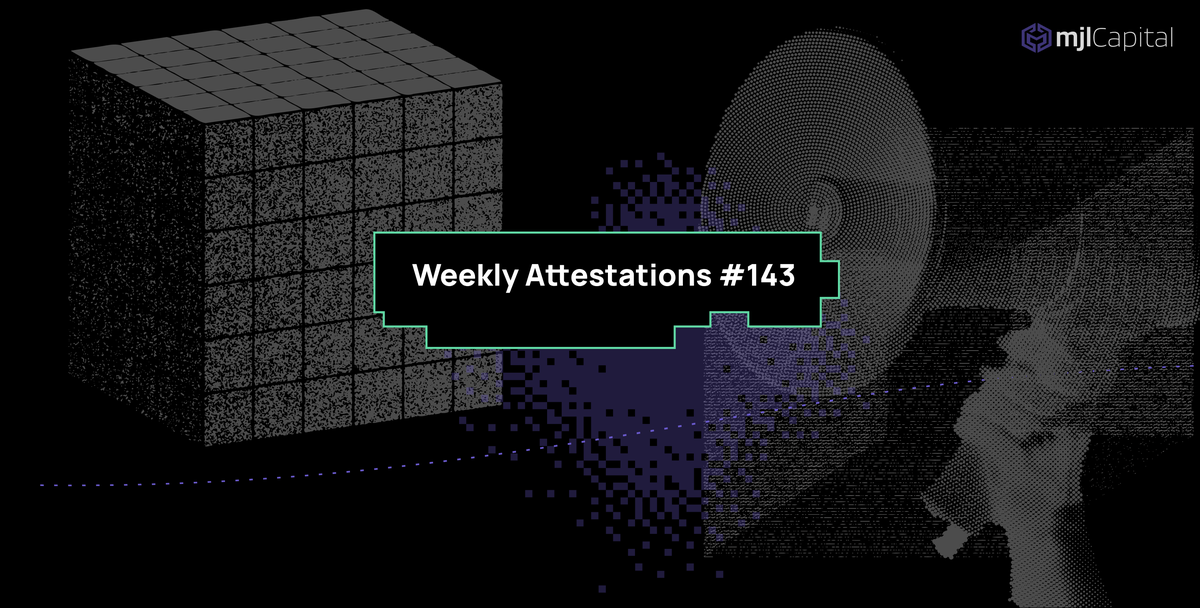Changpeng Zhao (CZ) is gone and replaced – at the end of November, Binance and its CEO finally reached a settlement of the charges brought by the Department of Justice, Treasury Department, and Commodities Futures Trading Commission. From Mt. Gox to Binance, and every FTX and BlockFi in between, we’ve seen time and time again that when control of a powerful system or platform is in the hands of a few (let alone a single leader), it often doesn’t end well.
For anyone keeping score, this isn’t a crypto-specific problem – J.P. Morgan has paid over $38 billion in fines for banking and securities violations over the past decade, 8x what Binance is on the hook for today. Whether you use Lehman Brothers, Celsius, or Binance as your proof point, the untrustworthiness of centralized intermediaries is clear and the critical need for decentralized, trustless protocols has never been more apparent.
But much like toxic relationships, these centralized entities continue to take advantage of us, betray our trust, even steal from us, and most of us keep crawling back after a “sorry”. Why? Especially when there are myriad alternatives.

“The contrast is clear: companies make promises, protocols make guarantees.” – MJL Capital, Quarterly Commentary Q4 2022
The average investor still gravitates towards using centralized exchanges over their decentralized alternatives. Why do humans inherently trust a large institution over themselves, especially when time and time again they let us down? The veil of centralization is not a security blanket. Not your keys, not your coins.
Conversations around accelerating DeFi adoption often focus on enhancing user experience. The prevalent belief is that web3 applications fall short in terms of user-friendliness. New users still face a steep learning curve, dealing with tasks like self-custody of secret keys, integrating wallets with decentralized applications (dApps), and managing transactions across multiple network endpoints.
While we generally agree with this sentiment, we also think we’re moving in the right direction, as fiat on-ramping to many DEX’s/Wallets has become dramatically easier, lowering entry barriers. Despite the somewhat complex user experience in crypto, developers are actively experimenting with innovative tools such as passkeys, smart accounts, embedded wallets, MPC, and advanced RPC endpoints to improve the frontend UX, potentially making web3 more mainstream and offering a better, more secure user experience compared to web2.

MetaMask, the leading self-custodial web3 wallet, now allows users to on-ramp directly to their wallet with fiat
Others have argued that Web3 has a product-market fit problem, not a UX problem. While this may be true for DeFi at large, it is clear that decentralized exchanges have found product-market-fit in crypto. DEX usage, especially since the "DeFi Summer" of 2020, has displayed resilience and growth, with metrics like monthly volume and active users experiencing fluctuations (peaking at ~$123 billion and to a bottom almost one year later of ~$28 billion) but ultimately showing positive trends.
DEXs play a pivotal role in the ecosystem, primarily excelling at offering permissionless liquidity, particularly for lesser-known tokens. They provide a vital platform for projects that might struggle to get listed on centralized exchanges. A prime example is Uniswap, which accounts for about 56% of total DEX volume across all chains and lists nearly 20 times more tokens than Coinbase and 3.4 times more than Binance. This makes DEXs an essential gateway in the digital asset landscape.
However, Uniswap faces its most significant competition not from fellow DEXs, but from centralized exchanges and traditional finance. This is evident in the disparity between user bases and trading volumes. In Q1 2023, Uniswap's performance, with 1.92 million unique addresses and an estimated $154 billion in volume across all chains, is modest compared to platforms like Coinbase with 8.4 million monthly users and $145 billion in trades, Binance's over $1.9 trillion in spot volume, and Nasdaq's approximately $109.6 billion in trading volume, which is about 48 times that of Uniswap.

Back to Binance, the big read-through here is not that crypto avoided potential disaster - it’s that it was never a risk in the first place. In contrast to the FTX, BlockFi, and the like, there has been no evidence suggesting that keeping assets on Binance carries more risk than other centralized venues – the exchange has been publishing monthly attestations of client funds and its $65B balance sheet for over a year.
But more importantly, the resilience of decentralized exchanges and continued improvements to the DeFi user experience have enabled perfect decentralized substitutes to exchanges like Binance.
Maybe the market is finally starting to understand this:
.png)
Important Legal Notices
This reflects the views MJL Capital LLC (“MJL”), but it should in no way be construed to represent financial or investment advice. Nothing in this correspondence is intended to constitute or form part of, and should not be construed as, an issue for sale or subscription of, or solicitation of any offer or invitation to subscribe for, underwrite, or otherwise acquire or dispose of any security, including any interest in any private investment fund managed by MJL. Any such offer may only be made pursuant to a formal confidential private placement memorandum of any such fund, which may be furnished to potential investors upon request and which will contain important information to be considered in connection with any such investment, including risk factors associated with making any investment in any such fund. Further, nothing in this correspondence is, or is intended to be treated as, investment or tax advice. Each recipient should consult their own legal, tax and other professional advisors in connection with investment decisions.
Domenic Salvo is a Managing Partner at MJL Capital, helping lead Portfolio Research and Investor Relations.




